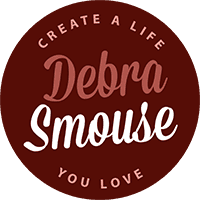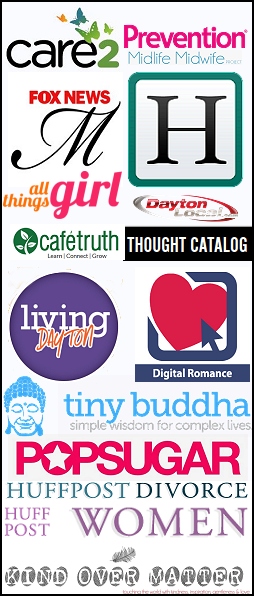A resume shows more than what you did in past jobs. It reveals the direction you chose. Your document can reflect how your work connects with your goals. Employers read resumes to see purpose. Statistics show recruiters spend about 6-8 seconds on each resume and call only 3% of them to interviews. Custom pitches win: 63% of recruiters prefer resumes adapted to the position. Plain resumes filled with irrelevant buzzwords can hurt chances in 29% of cases! This article explains how to reflect your life goals within a resume.
Define Your Life Goals
Before you update your resume, identify the direction you want to follow. Look at your actions, results, and choices. You will notice a pattern.
Ask yourself a few key questions:
-
- What kind of work creates value for you?
- Which values guide your daily decisions?
- What problems do you focus on solving?
- What result do you aim for in five years?
Review your past roles and projects and pick the ones that made an impact. Write down which skills you used and what changed. This helps uncover what motivates you.
When you see your goals clearly, you can present them with confidence. Your resume becomes a tool that supports those goals. Each section highlights your direction. Each detail shows how your choices reflect what you believe in. A resume with direction gives the reader a complete picture. It brings structure to your background and purpose to your path.
At the same time, not everyone with a decent work history can shape that story into an effective resume. Applicants with advanced careers still submit resumes that fail to pass automated tracking systems (ATS). These systems filter out documents that lack keywords, standard formatting, or required details (like salary expectations or job titles). Some hiring managers skip over resumes that feel too general, miss key information, or include outdated structures. That’s where professionals step in. At craftresumes.co website, experts help organize experience and skills in a way that meets modern hiring standards. The service includes resume creation, LinkedIn profile updates, and one-on-one consultations to refine your career story for higher placement in candidate lists.
Write a Summary That Reflects Purpose
The top of your resume presents a quick profile. Employers scan this first. It must show who you are, what you do, and where you plan to go. Eye‑tracking studies reveal that nearly 80% of the initial attention stays on items like the current title, employer, and summary area before moving further.
Follow this method when you write it:
-
- Limit the section to 2-4 lines
- Mention your job title or main function
- Include one outcome or skill
- Explain your direction with clear words
- Use terms related to the role or company
Avoid empty phrases. Say something specific about your work and future plans.
Example:
“Project assistant with two years of coordination work in public health. Focuses on access and process improvement in local systems.”
You can also include a career objective. This helps explain a pivot or a long-term plan. Use exact words to describe what you bring and where you will apply it.
Example:
“Entry-level researcher focused on data systems that support energy reform.”
That line shows intent, skill focus, and subject area. It leaves no doubt about your purpose.
Here is a list of reminders:
-
- Use plain language
- Replace abstract phrases with action-based terms
- Show movement toward a goal
- Focus on one direction
- Stay specific
This short section builds the foundation for the rest of your resume!
Shape Experience and Skills to Support Your Goals
Now move to the main part of your resume. This includes your work history and skills. Use this space to prove how you contribute to outcomes. Connect each result to your goal.
Use the Challenge-Action-Result structure for each bullet point:
-
- Challenge: Describe a problem you faced
- Action: Describe what you did
- Result: Show what changed because of your action
Example:
“Updated inventory system across three sites. Cut delays by 30 percent.”
Now add one more detail that connects to your direction:
“This strengthened my interest in logistics systems and process efficiency.”
That one line links the job to your goal. You create a narrative that moves forward.
Next, update your skills section. Select tools and abilities that support your future role. Avoid generic language. Match your list to your goal and the job.
Examples:
-
- Strategic goal: Excel, forecasting, reporting, data trends
- Community goal: Event planning, cultural knowledge, outreach platforms
- Technical goal: API tools, SQL, system troubleshooting
Let your skills reflect the kind of problems you aim to solve. Make each one relevant to your direction.
Show Your Goals Through Projects and Volunteer Work
Your resume can include external activities. Add sections that show initiative, learning, or alignment with values. Volunteer work, certifications, or independent projects help fill that space.
Candidates with volunteer history have a 27% higher chance of finding employment compared to non‑volunteers, according to research from the Corporation for National and Community Service (CNCS). A Deloitte survey found that 81% of HR leaders consider skilled volunteering when making hiring decisions, and 76% believe volunteering makes a candidate more desirable, especially recent graduates.
The table below shows how to connect these details with your goals:
| Life Goal | Project or Role | Result and Explanation |
| Improve public spaces | Community cleanup lead | Organized 30 volunteers. Reduced waste by 20 percent in 2 months. |
| Build stronger education | Volunteer tutor | Helped 15 students. Raised test scores by 12 percent. |
| Promote accessibility | Updated internal policy materials | Improved document access for employees with low vision. |
| Support data transparency | Contributor to open-data dashboard | Shared city-level reports. Boosted local engagement. |
Select examples that support your message and avoid random volunteer work. Focus on results that match your values and direction. This section adds weight to your resume. It shows you take action and apply your goals outside of regular work hours.
Adjust Your Resume for Each Job
A majority (63%) of recruiters prefer resumes and cover letters that match the specific job description. 83% of recruiters report that they are more likely to hire candidates whose resumes align with the position they applied for. You need one resume base, but each job requires a version that fits the role. Make updates before every application.
Match the Job Language
Start with the words in the job posting. Read them carefully. Focus on verbs, job titles, and project goals. Repeat those words in your summary, experience, and skills.
If the role lists “client strategy” or “cross-functional reporting,” use that wording. This helps match expectations and shows attention to detail.
Connect Your Purpose With Their Focus
Read the company’s mission or recent work. Learn what drives them. Then link that focus with your personal goal. This approach helps the employer understand your reason for applying.
Example: If they promote energy access and your goal involves equity in utilities, include that overlap. Show it early in your summary or in your project details.
Highlight the Right Strengths
Each job needs a different emphasis. If the role calls for leadership, push project outcomes, team direction, and decision making. If the job focuses on research, bring forward detail tracking, documentation, and analysis.
Your resume should shift slightly depending on the goal of the job. This versioning helps your message match what each employer values most.
Conclusion
A resume with purpose becomes a map that shows where you’ve been and where you intend to go. It connects dots between your past choices, current strengths, and future goals. When hiring managers read such a resume, they absorb a message. They see a candidate who understands their own path and knows how to contribute. Research shows that resumes reflecting career direction and company alignment receive more attention and callbacks. To build this kind of resume, follow these steps:
-
- Clarify your long-term goals.
- Write a summary that reveals direction.
- Shape experience through results.
- Add sections that prove alignment.
- Revise for each role.
This approach shows you as a candidate with direction, clarity, and intent. Let your resume reflect who you are and what you believe in. Make it your guide and your statement. When every part supports your vision, your job search picks up speed and each application moves with greater purpose.
Want to learn more tips and tricks for loving yourself?
Snag a free workbook and get inspiration on all the ways to love your life even more.









